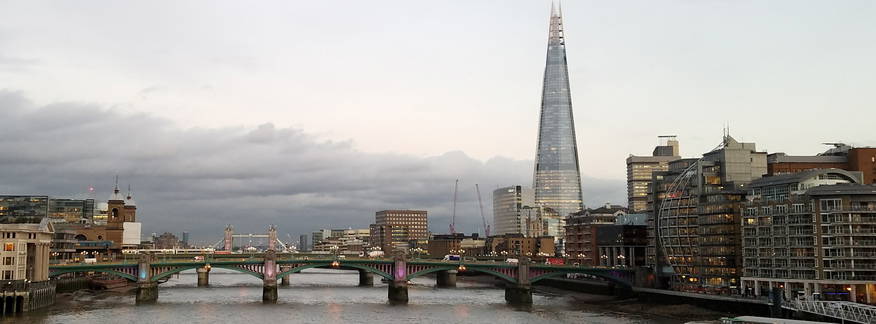Tour Overview
Focus: The south bank of the Thames, from Tower Bridge on the east to Hungerford Bridge on the west, with emphasis on Southwark (pronounced Suth-uck).
Historical Context
- Roman Times: This area was already becoming a suburb of London during the Roman period. Its strategic location as a gateway to the south lent importance to its existence.
- Anglo-Saxon Times: During the Anglo-Saxon era, the village Sud Werk (south works) became an important defense against attack from the south.
- Medieval Times: Southwark grew in size, containing both palaces and slums.
- Tudor Times: Southwark develops primarily as a theatre district, with a great deal of violent games and lawlessness.
- Victorian Times: By the Victorian era, Southwark had devolved into an industrial area with squalor and poverty.
- Modern Times: Since 1951, the south bank of the Thames has become the scene of a major development, designed to upgrade both the living area and cultural opportunities to be found here.
Places to Visit in This Area When You Have More Time
The Tower Bridge Experience, City Hall, Hay’s Galleria, Southwark Cathedral, Globe Theatre, Tate Modern, National Theatre, Hayward Gallery, National Film Theatre, Museum of the Moving Image, Queen Elizabeth Hall, Royal Festival Hall.
Stops
-
Introduction
-
#1 Start: Tower Hill Tube Station to Tower Bridge
-
#2 Thames Path
-
#3 City Hall back to Thames Path
-
#4 HMS Belfast to Tooley Street
-
#5 Borough High Street to London Bridge
-
#6 Southwark Cathedral
-
#7 Clink Prison
-
#8 The Globe to Thames Path
-
#9 South Bank Centre
-
#10 The End: Return to the BYU Centre

